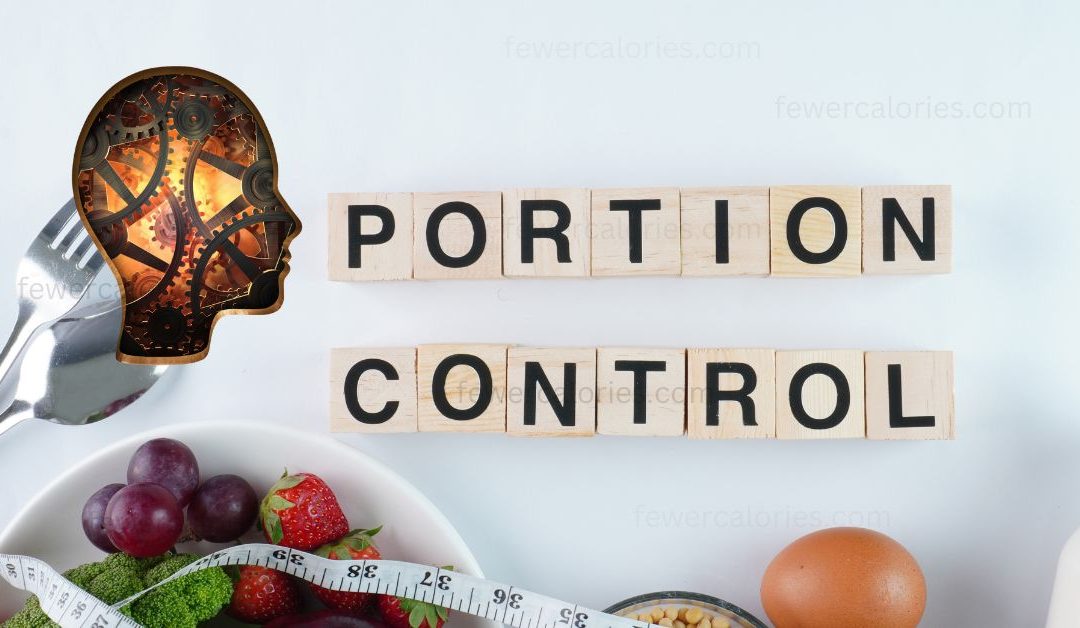If you’ve ever struggled with overeating or finding it difficult to control your portions, you’re not alone. We will explore techniques and strategies to help you develop a healthier relationship with food. Whether you’re looking to lose weight or simply want to eat more mindfully, understanding the psychological factors behind portion control is key. By learning how to rewire your brain and make conscious choices, you can start to feel more in control of your eating habits and make healthier decisions that align with your goals.
Understanding Portion Control
Portion control is a crucial aspect of maintaining a healthy diet and achieving weight loss goals. It involves consciously managing the amount of food you eat in order to ensure you are consuming appropriate portion sizes. By understanding the importance of portion control and the various factors that influence our eating habits, you can develop effective strategies to take control of your eating habits and make lasting changes.
The Importance of Portion Control
Portion control is essential for maintaining a healthy weight and preventing overeating. When you consume larger portions than necessary, you are more likely to exceed your calorie needs, which can lead to weight gain. It’s important to remember that even if you are eating healthy foods, consuming excessive amounts can still lead to weight gain.
Additionally, portion control can help you cultivate a healthier relationship with food. By being more mindful of the quantity of food you consume, you can learn to listen to your body’s hunger and fullness cues. This can help you develop healthier eating habits and reduce the tendency to eat based on emotional or external triggers.
Why Portion Control is Challenging
Portion control can be challenging for a variety of reasons. One major factor is that portion sizes have significantly increased over the years, both when dining out and at home. This increase in portion sizes has skewed our perception of what a “normal” portion looks like, making it difficult to accurately gauge how much food we should be eating.
Additionally, many of us have become accustomed to eating until we feel full, rather than eating until we are satisfied. This disconnect between physical fullness and satisfaction can lead us to overeat and consume larger portions than necessary. It may take some time and practice to retrain our brains to recognize true satiety and adjust our portion sizes accordingly.
The Role of Psychology in Portion Control
Psychological factors play a significant role in portion control. By better understanding these factors, you can develop strategies to overcome the challenges and make positive changes in your eating habits.
Cognitive Factors
Mindful Eating – Paying Attention to Your Food
Mindful eating is a practice that involves fully engaging your senses and paying close attention to the experience of eating. By savoring each bite, being aware of the tastes and textures, and eating slowly, you can develop a greater awareness of your body’s hunger and fullness cues. This can help you eat more mindfully and make more conscious choices about portion sizes.
By practicing mindful eating, you can also reduce mindless snacking and emotional eating, which are often associated with overeating. Being fully present and engaged with your food can help you develop a healthier relationship with eating and improve portion control.
The Influence of Visual Cues
Visual cues can have a powerful impact on our perception of portion sizes. Research has shown that we tend to rely heavily on external cues, such as the size of our plates, bowls, or even the packaging of food, to determine how much we should eat.
To take advantage of this phenomenon, you can use smaller plates and bowls to create the illusion of larger portions. By visually filling up your plate, even if the actual quantity of food is smaller, you can trick your brain into feeling satisfied with a smaller portion.
The Impact of Plate Size
The size of your plate can also greatly influence portion control. Studies have consistently shown that individuals tend to serve themselves larger quantities of food when using larger plates. This “portion distortion” can lead to overeating without us even realizing it.
To combat this effect, consider using smaller plates or bowls when dishing out your meals. By doing so, you can create a visual cue that encourages smaller portion sizes and helps you feel satisfied with less food.
Environmental Factors
The Power of Food Placement and Accessibility
The environment in which we eat can strongly influence our portion sizes. Research has shown that if high-calorie foods are more easily accessible or prominently displayed, we are more likely to consume larger portions of those foods.
To promote portion control, arrange your environment in a way that makes healthier food options more visible and easily accessible. Keep a bowl of fresh fruit on the counter or have pre-cut vegetables readily available in the fridge. By making healthier choices more convenient, you can increase the likelihood of consuming appropriate portions.
Social Influences on Portion Sizes
Social situations can also impact our portion sizes. When dining with others, we may be influenced by the eating behaviors and portion sizes of those around us. We often conform to social norms and consume similar amounts of food, even if it doesn’t align with our personal needs.
To navigate this challenge, focus on your own needs and listen to your body’s cues. Remember that it’s okay to politely decline seconds or to ask for smaller portions when dining out. By prioritizing your own health and well-being, you can make choices that align with your portion control goals.
The Effect of Food Packaging
Food packaging and marketing techniques can also influence portion sizes. Many food products are packaged in larger quantities or with multiple servings per package, which can encourage overeating. Additionally, attractive packaging and marketing claims can lead us to consume larger portions due to the perceived value or desirability of the product.
When purchasing pre-packaged foods, pay close attention to serving sizes and nutritional information. Consider portioning out the appropriate serving size before eating to avoid mindlessly consuming more than what is recommended.
Emotional Factors
Emotional Eating and Portion Control
Emotional factors play a significant role in portion control. Many individuals turn to food as a way to cope with emotions such as stress, sadness, or boredom. This can lead to overeating and consuming larger portions than necessary.
To address emotional eating and promote portion control, it’s important to develop alternative coping mechanisms for dealing with emotions. Find healthy outlets for stress, such as exercise, journaling, or engaging in hobbies. By addressing the underlying emotional triggers and finding healthier ways to cope, you can reduce the reliance on food for emotional comfort.
Stress Management and Healthy Eating Habits
Stress can have a direct impact on our eating habits and portion control. When we are stressed, our bodies produce cortisol, a hormone that can increase appetite and cravings, particularly for high-calorie foods.
Developing effective stress management techniques, such as deep breathing exercises, meditation, or engaging in physical activity, can help reduce stress and improve portion control. By managing stress levels, you can better regulate your eating habits and make healthier choices when it comes to portion sizes.
The Role of Cravings and Emotional Triggers
Cravings and emotional triggers can frequently lead to overeating and make portion control challenging. Understanding the root causes of cravings, whether they are related to emotions or specific food cues, can help you develop strategies to manage them effectively.
When a craving strikes, take a moment to assess whether it is driven by true hunger or if it is a response to emotional triggers. Consider engaging in a distracting activity, such as going for a walk or calling a friend, to redirect your attention away from the craving. By addressing cravings in a mindful and intentional manner, you can overcome their influence on portion control.

Strategies for Portion Control
Utilizing the Power of Meal Planning
Meal planning is a valuable tool for portion control. By planning your meals in advance, you can ensure that you are including appropriate portion sizes and a balanced mix of nutrients. This can help you avoid making impulsive food choices based on convenience or cravings.
When meal planning, consider incorporating a variety of fruits, vegetables, lean proteins, and whole grains. Use measuring cups or a food scale to portion out the appropriate amounts and store the pre-measured portions for easy access throughout the week. By taking the time to plan and prepare your meals, you can set yourself up for success in managing portion sizes.
The Benefits of Tracking Food Intake
Food tracking can be an effective strategy for promoting portion control. By keeping track of what and how much you eat, you can gain insight into your eating habits and identify areas where portion sizes may be excessive.
There are various methods for tracking food intake, including food diaries, smartphone apps, or online platforms. Find a method that works best for you and commit to consistently recording your food choices and portion sizes. This awareness can help you make more informed decisions about portion control and identify areas for improvement.
Practicing Portion Distortion Techniques
Portion distortion techniques can be helpful in retraining your brain to recognize appropriate portion sizes. One technique is to use your hand as a visual reference. For example, a portion of protein should be approximately the size of your palm, while a serving of grains should fit in your cupped hand.
Another technique is to practice measuring out food using standard kitchen tools. This can help you become more familiar with appropriate portion sizes and make it easier to estimate servings when dining out or preparing meals without measuring utensils.
The Role of Habits
Forming Healthy Portion Control Habits
Developing healthy portion control habits is essential for long-term success. Start by slowly incorporating changes into your routine rather than attempting to overhaul your habits overnight. Focus on one aspect at a time, such as practicing mindful eating, using smaller plates, or incorporating meal planning into your routine.
Consistency is key when forming habits. Make a conscious effort to stick to your portion control goals, even when faced with challenges or temptations. Over time, these habits will become second nature, making portion control an effortless part of your daily routine.
Breaking Unhealthy Eating Patterns
Breaking unhealthy eating patterns is a crucial step in achieving and maintaining portion control. Identify the triggers that lead to excessive portion sizes or mindless eating, such as stress, boredom, or certain social situations. Once you recognize these patterns, you can develop strategies to address them effectively.
When faced with triggers, pause and evaluate your feelings and motivations. Consider healthier alternatives for coping or distractions that can help redirect your focus away from food. By breaking unhealthy eating patterns, you can regain control over your portion sizes and cultivate healthier habits.
Creating a Supportive Environment
Creating a supportive environment is instrumental in maintaining portion control. Surround yourself with people who support your goals and encourage healthy eating habits. Communicate your intentions and ask for their support in making portion control a priority.
Additionally, consider organizing your physical environment to align with your goals. Keep unhealthy snacks out of sight and stock your pantry and fridge with nutritious options. Having a supportive and conducive environment can make portion control easier and increase your chances of success.
The Psychology of Food Satisfaction
Sensory Satisfaction and Portion Control
The sensory experience of eating can greatly impact our satisfaction with a given portion size. Engaging all of our senses while eating, including the smell, taste, texture, and presentation of food, can enhance the overall satisfaction we derive from each bite.
To maximize sensory satisfaction, take the time to savor each mouthful. Chew slowly and deliberately to fully experience the flavors and textures. By focusing on the sensory aspects of eating, you can feel more satisfied with smaller portions, as your brain receives a more complete interpretation of the meal.
Strategies for Increasing Food Satisfaction
In addition to sensory satisfaction, there are other strategies for increasing food satisfaction and promoting portion control. One effective approach is to prioritize variety in your meals. Including a wide range of flavors, textures, and colors can enhance the overall enjoyment of the meal and leave you feeling more satisfied.
Another strategy is to ensure that your meals are balanced and include a mix of macronutrients. This can help prevent feelings of deprivation or cravings for specific food groups, which can lead to overeating. By satisfying your body’s nutritional needs, you can reduce the urge to consume larger portions.
The Role of Mindfulness in Enjoying Smaller Portions
Mindfulness plays a crucial role in enjoying smaller portions. By cultivating a mindset of being fully present during meals, you can increase your awareness of portion sizes and savor the experience of eating.
Practice focusing on the taste, texture, and aroma of each bite. Be aware of your body’s hunger and fullness cues throughout the meal. By being mindful of your eating habits, you can naturally gravitate towards smaller portion sizes without feeling deprived.
Overcoming Psychological Barriers
Addressing Emotional Triggers to Overeating
Emotional triggers can often lead to overeating and make portion control challenging. It’s important to identify and address these triggers to overcome them.
Start by recognizing your emotional triggers for overeating, whether it’s stress, boredom, loneliness, or other emotions. Once you identify these triggers, develop alternative coping mechanisms to manage them. This can involve engaging in activities that bring you joy and fulfillment, seeking support from loved ones, or practicing stress-management techniques.
By finding healthier ways to address emotional triggers, you can reduce your reliance on food as a source of comfort and make progress toward portion control.
Dealing with Food Guilt and Restriction
Feelings of guilt and the impulse to restrict food can hinder successful portion control. It’s important to approach your relationship with food from a place of balance and self-compassion.
Avoid labeling foods as “good” or “bad” and instead focus on creating a balanced and varied diet. Allow yourself to enjoy your favorite foods in appropriate portion sizes without guilt. Restricting yourself too strictly can lead to a cycle of deprivation and overindulgence, making it harder to control portions.
Embrace a mindset of moderation and self-care, acknowledging that occasional treats are part of a healthy and balanced lifestyle.
Building a Positive Relationship with Food
Building a positive relationship with food is crucial for long-term success in portion control. It involves cultivating a mindset of self-compassion, flexibility, and enjoyment of food.
View food as nourishment for your body and an opportunity to explore new flavors and experiences, rather than solely focusing on calories and portion sizes. Practice gratitude for the nourishment food provides and savor the delicious flavors in each bite. By fostering a positive relationship with food, you can approach portion control as an act of self-care and make lasting changes.
Long-Term Sustainability
Maintaining Portion Control as a Lifestyle
Maintaining portion control as a lifestyle requires long-term commitment and consistency. It’s important to approach portion control as a sustainable and enjoyable practice rather than a short-term solution.
Continue to practice mindful eating and remain aware of portion sizes even after reaching your desired weight or health goals. By integrating portion control into your daily routine, it becomes second nature and supports a healthy lifestyle.
Finding Balance and Flexibility
Finding balance and flexibility is crucial in maintaining portion control over the long term. It’s important to allow yourself the freedom to enjoy special occasions, social gatherings, and occasional indulgences without guilt or restriction.
While portion control is an essential component of a healthy lifestyle, it should not lead to a rigid or restrictive mindset. Embrace the concept of balance, allowing yourself to enjoy smaller portions of indulgent foods occasionally while predominantly focusing on nourishing your body with whole, nutrient-dense foods.

Celebrating Progress and Non-Scale Victories
Celebrating progress and non-scale victories is an important aspect of maintaining motivation and sustaining portion control. Remember that success in portion control is not solely defined by the number on the scale.
Take time to acknowledge and appreciate the positive changes you have made. Recognize the improvements in your overall well-being, such as increased energy levels, improved digestion, enhanced sleep quality, or mental clarity. Celebrate the positive impacts of portion control on your life and use these achievements as fuel to sustain your newfound habits.
Seeking Professional Help
When to Consider a Therapist or Nutritionist
In some cases, seeking the guidance of a therapist or nutritionist can be beneficial in addressing underlying psychological factors that contribute to portion control challenges. They can provide personalized support and guidance tailored to your specific needs.
Consider seeking professional help if you consistently struggle with emotional eating, disordered eating patterns, or if you have a history of trauma or other mental health concerns. Consulting with a therapist or nutritionist can help you navigate these challenges and develop a healthier relationship with food and portion control.
The Benefits of Support Groups
Support groups can also be valuable resources for individuals seeking to improve their portion control habits. Connecting with others who share similar goals and challenges can provide a sense of community and accountability.
Look for local or online support groups focused on healthy eating, weight management, or mindful eating. Sharing experiences, exchanging tips, and receiving encouragement can be immensely helpful in staying motivated and committed to portion control.
Individualized Approaches for Portion Control
Every individual is unique, and what works for one person may not work for another. It’s important to recognize that portion control strategies must be tailored to your specific needs, preferences, and lifestyle.
Experiment with different approaches and techniques to find what resonates with you personally. Adapt portion control strategies to fit seamlessly into your daily routine and align them with your goals and preferences.
By taking an individualized approach, you can discover the methods that work best for you and achieve sustainable portion control habits.
In conclusion, understanding portion control is crucial for achieving and maintaining a healthy weight and promoting optimal well-being. By recognizing the various psychological factors that influence portion sizes and practicing effective strategies, such as mindful eating, environmental modifications, and emotional management, you can take control of your eating habits and create a supportive environment for long-term success. Remember, portion control is not a quick fix but a mindset and lifestyle that can lead to lasting health improvements. Embrace the journey, celebrate your progress, and enjoy the benefits of a balanced and satisfying relationship with food.
© 2024 by fewercalories.com. All rights reserved. No part of this document may be reproduced or transmitted in any form or by any means, electronic, mechanical, photocopying, recording, or otherwise, without prior written permission of fewercalories.com.






